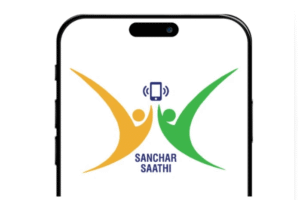
ChatGPT 2.5 Billion Daily Prompts Signal Search-Scale Shift
Executive Summary
ChatGPT 2.5 billion daily prompts. That is the latest usage figure reported for the AI assistant, with about 330 million prompts coming from users in the United States each day (data as of July 21, 2025, per the source article). The scale places conversational AI engagement in a volume band that invites comparison with legacy search behavior. Google’s parent company recently cited 5 trillion searches per year, averaging just under 14 billion daily searches. Independent marketers and analytics firms have published similar ranges: 13.7 billion and 16.4 billion daily searches, depending on methodology. The trajectory matters: in December, OpenAI CEO Sam Altman cited more than 1 billion daily queries. Usage has since more than doubled in roughly eight months.
Why Volume Matters: From Curiosity to Daily Utility
The raw count—ChatGPT 2.5 billion daily prompts—is not just a vanity metric. High-frequency interaction indicates that users are returning with real tasks. The U.S. share (330 million daily prompts) shows large-market depth even before considering global expansion. When digital behavior reaches the billions-per-day threshold, it tends to reshape adjacent workflows: information lookups, drafting, coding assists, customer touchpoints, and internal knowledge retrieval. While the article stops short of segment detail, the headline number alone tells leaders that conversational interfaces are no longer fringe.
Benchmarking Against Search Habits
Executives instinctively benchmark new channels against search. The article’s comparative data helps. Alphabet reported 5 trillion Google searches per year, which translates to just under 14 billion per day on average. Separate estimates from NP Digital (Neil Patel) place daily Google queries at 13.7 billion, while research from SparkToro and Datos suggests about 16.4 billion. Even at the low end, search remains an order of magnitude larger than ChatGPT usage. Yet the comparison frame is revealing: only platforms that reach meaningful scale get placed next to Google. That emerging mental model—search-sized intent versus chat-shaped intent—will influence budget, measurement, and integration roadmaps.
Growth Trajectory: Doubling in Eight Months
Historical context sharpens the signal. In December, OpenAI CEO Sam Altman said users were sending over 1 billion daily queries to ChatGPT. By July 21, 2025, reported usage hit 2.5 billion daily prompts. That means volume more than doubled in roughly eight months. Sustained acceleration at that clip pressures enterprise planning cycles. Pilots that waited for “proof of scale” now have it. The next question is how quickly organizations can map relevant use cases and governance guardrails.
Strategic Questions for Enterprise Leaders
Rising usage raises operational questions that leaders should examine:
- Query Mix & Intent: What proportion of employee or customer interactions might shift from search to chat-style tasks?
- Data Governance: How will prompt and response data be logged, redacted, or integrated with existing records?
- Productivity Mapping: Which workflows show repeatable gains when conversational AI is embedded?
- Regional Adoption: With 330 million daily U.S. prompts reported, where do other priority markets sit on the adoption curve?
Converting Conversation Volume to Pipeline Insight (Optional Play)
If your teams experiment with AI assistants at scale, consider how downstream customer signals re-enter your revenue stack. Prompt-driven discovery questions, draft emails, and knowledge lookups often precede formal sales engagement. Capturing that intent inside a CRM can tighten handoffs between marketing, success, and sales. A lightweight starting point is to map high-frequency conversational themes to deal stages in a customer relationship management platform such as Pipedrive CRM. You can explore that workflow alignment here Pipedrive CRM.
Final Reflection Question
At what daily prompt threshold would your organization treat conversational AI usage data as a core input for product, sales, and support decisions?



